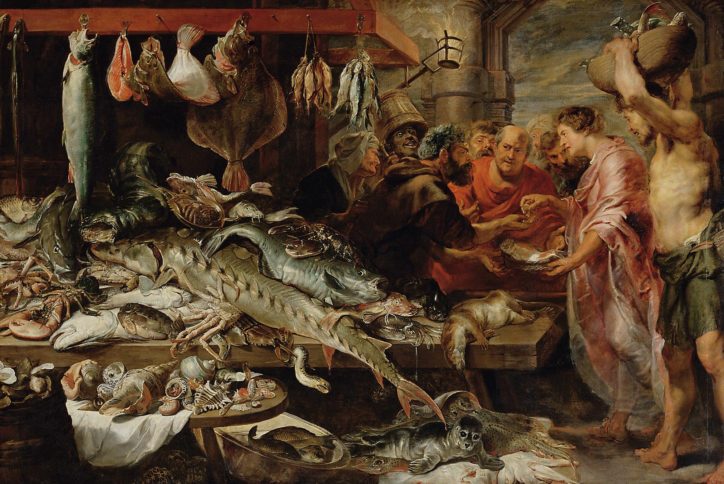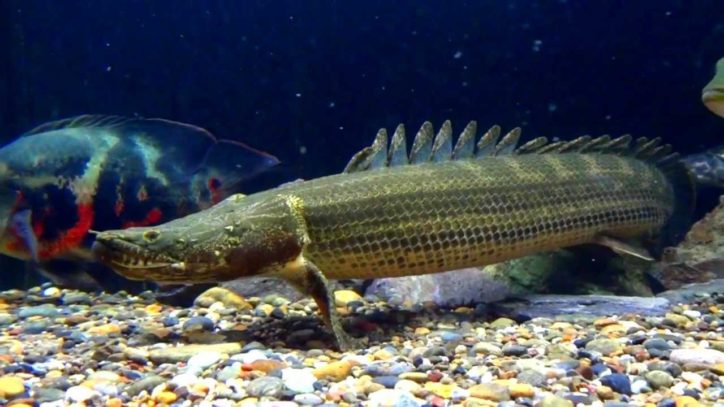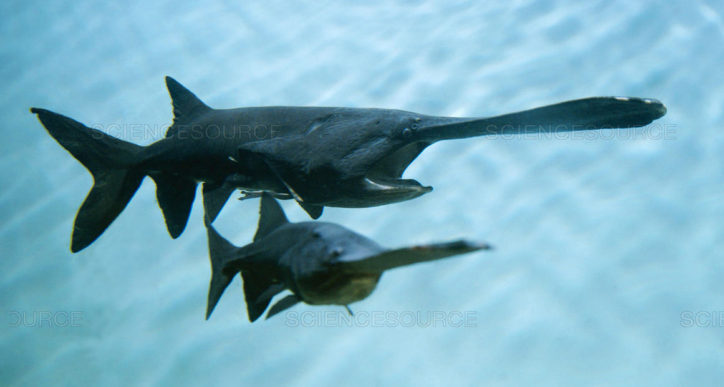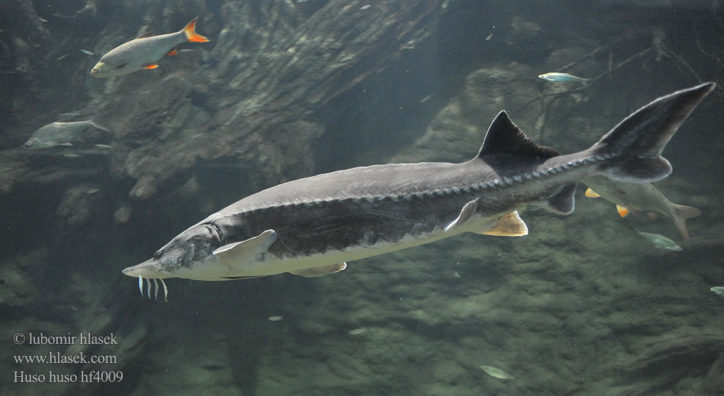Chondrostei, the subclass of Actinopterygii (ray-finned fishes), has already existed on the planet since the Paleozoic Era, so its modern representatives can be considered living dinosaurs for sure.

(The Fish Market. 1618. Frans Snyders)
Representatives of Chondrostei existing nowadays can be up to 4.2 meters long (and according to some data unconfirmed by documentary sources, they can be even up to 8-9 meters long – beluga). Their body is covered with bony, ganoid tissue (containing ganoin, that is, glassy, often multi-layered mineralized tissue that covers scales, skull bones and fin rays in some fish), five rows of scutes (scutes are rows of bone shields characteristic of sturgeons) or may be bare.
Two modern orders comprise 41 species that exist nowadays. Representatives of the Polypteriformes order are endemics of water bodies of tropical Africa.

(Nile bichir (Polypterus bichir). Photo by adlayasanimals.wordpress.com)
However, their distant relatives, representatives of the Acipenseriformes order, comprising 28 existing species, inhabit only the waters of the Northern Hemisphere.
The order, in its turn, includes 2 families. Polyodontidae, inhabitants of the fresh waters of North America and China, are not found in Europe.

(American paddlefish (Polyodon spathula). Photo by © Tom McHugh. sciencesource.com)
Representatives of the Acipenseridae family inhabit the Adriatic Sea and the freshwater bodies of the Balkan and Apennine Peninsulas.

(Beluga (Huso huso). Photo by © Lubomir Hlasek. hlasek.com)
Until recently, we could confidently consider the following fish species of the sturgeon family to be related to the Adriatic region: beluga, or European sturgeon (Huso huso), Adriatic sturgeon (Acipenser naccarii), sterlet (Acipenser ruthenus), European sea sturgeon, or Atlantic sturgeon (Acipenser sturio).